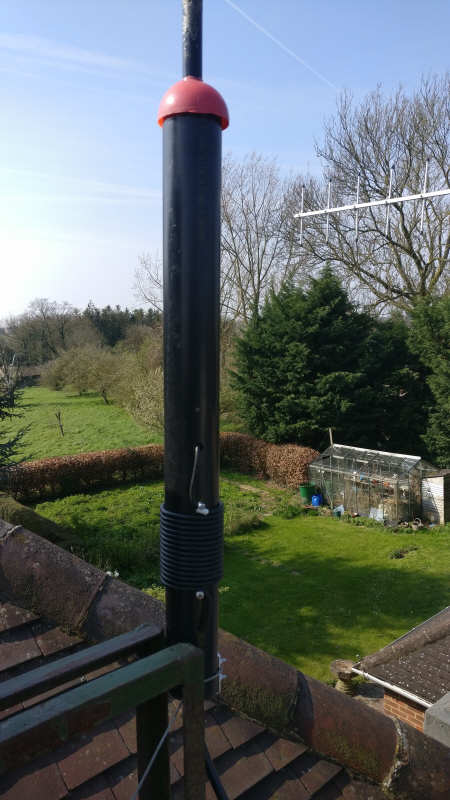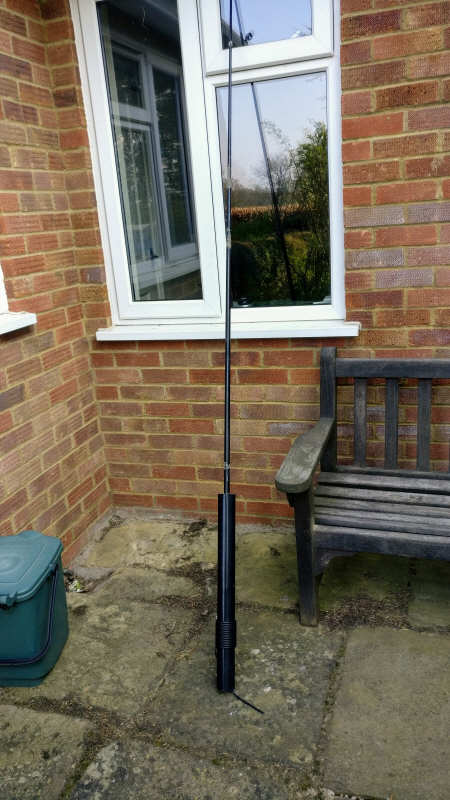Projects
A large proportion of my projects are antenna related, but there are a few other projects that over time will be listed here. Keep an eye on this page!Portable Morse Bug
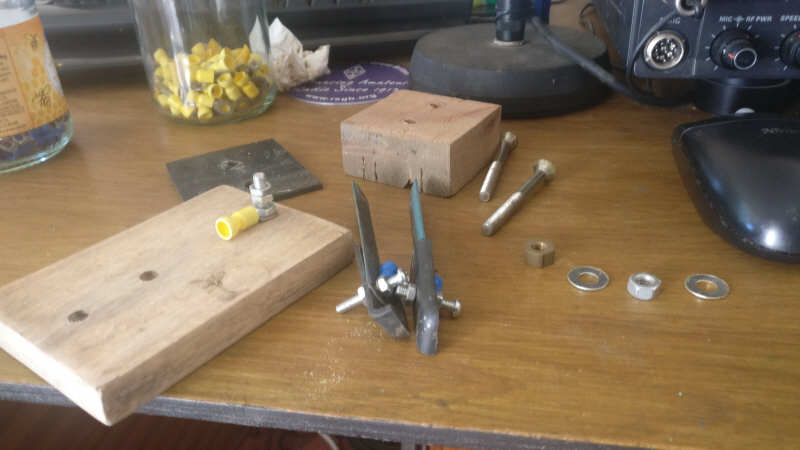 Recently I went on a SOTA expedition with my good friend Steve 2E0MMY to the Brecon Beacons. As part of the activation I wanted to take a Paddle to operate CW (morse code) with. My own paddle that I use in the shack is very heavy and is a highly precision made piece of equipment that I would not want to take up a mountain.
Recently I went on a SOTA expedition with my good friend Steve 2E0MMY to the Brecon Beacons. As part of the activation I wanted to take a Paddle to operate CW (morse code) with. My own paddle that I use in the shack is very heavy and is a highly precision made piece of equipment that I would not want to take up a mountain.
So one afternoon I headed out to the workshop to make something for myself. I heard of someone using a hacksaw blade to produce a single paddle, so I thought I would see what I could do to produce a one as a double paddle.
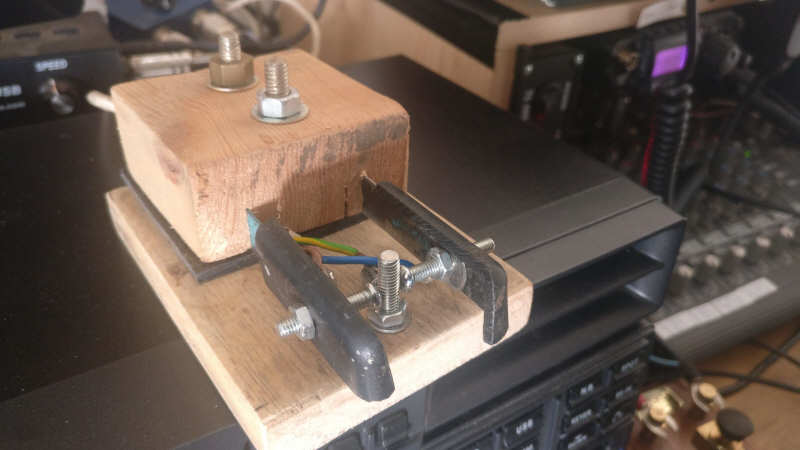 The photos show all the details but basically the central vertical bolt is earth point and the bolts that are fixed through the holes in the end of the hacksaw blade that are set horizonally are moved in contact with the vertical bolt to complete the circuit to produce the dit or the dah. There is an eyelet solder tag on the inside of the paddle arms which is held in place along with the plastic edges from a square flower pot by the horizontal bolts that creat the elecrical connetion with the verticle bolt.
The photos show all the details but basically the central vertical bolt is earth point and the bolts that are fixed through the holes in the end of the hacksaw blade that are set horizonally are moved in contact with the vertical bolt to complete the circuit to produce the dit or the dah. There is an eyelet solder tag on the inside of the paddle arms which is held in place along with the plastic edges from a square flower pot by the horizontal bolts that creat the elecrical connetion with the verticle bolt.
The wire runs in a groove under the top woodern block and the hacksaw blade (that was cut to length with an angle grinder) are held in place in a pair of grooves that were produced with another hacksaw blade just slightly shallower than the width of the hacksaw blade. So when the top woodern block is bolted down the slightly protuding blades are held firmly in place by the black flat plastic side from the same flower pot. That plastic side also holds the blades off the floor of the lower woodern block to allow free movement.
I was really surprised how well this worked out and is easy to operate holding the paddle on the knee with the left hand while operating it with the right. An improvement maybe to use a piece of copper tube over the vertical bolt, perhaps something like a piece of copper brake pipe. Then with solder applied at the contact points of the horizontal bolts, and with solder blobs on the end of the horizontal bolts, it may make for a more consistant contact, but really it works very well as it is!

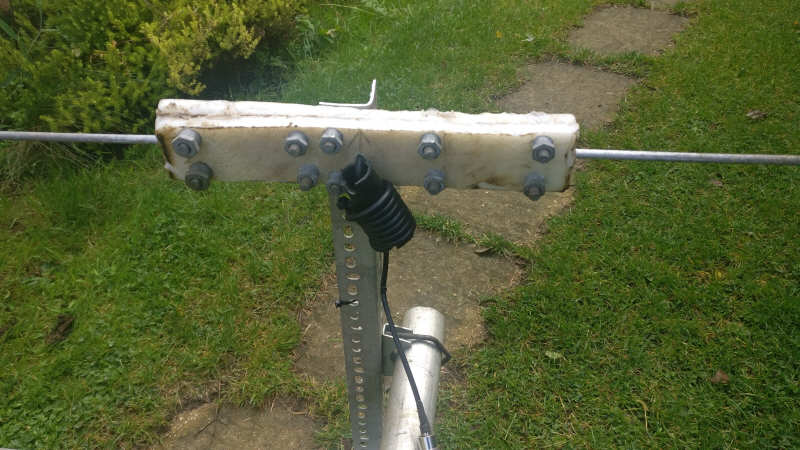 I have been running a 6m Moxon for about a year now and have found it to be a rather effective antenna with a reletivly small impact visually in the air. In the more recent past I made a 4m verticle which is made around the parts from a broken 10m flag pole! Although that was quite successful, it left a lot to be desired when running in one of the RSGB's 4m contests.
I have been running a 6m Moxon for about a year now and have found it to be a rather effective antenna with a reletivly small impact visually in the air. In the more recent past I made a 4m verticle which is made around the parts from a broken 10m flag pole! Although that was quite successful, it left a lot to be desired when running in one of the RSGB's 4m contests.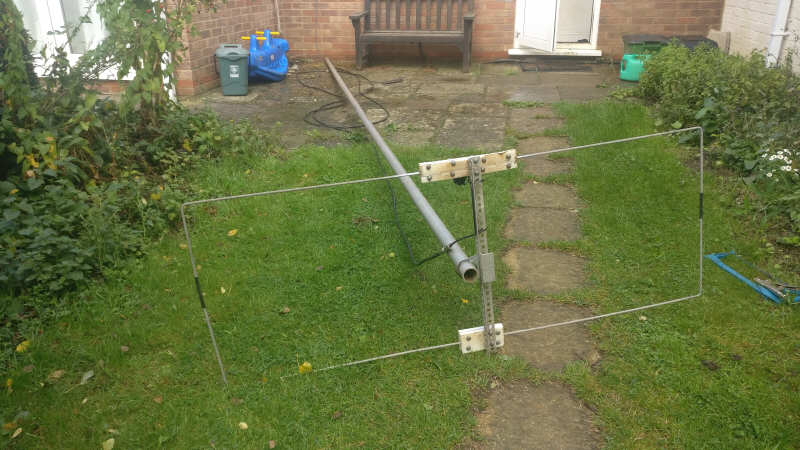 This led me to decide to make a Moxon for 4m, which is now waiting for the next 4m contest to try out in anger. The antenna is made up out of a long length of 7mm solid aluminiam rod which has been hanging around for about 40 years! (I knew it would come in handy one day!!) The insulators and which create the support for the elements is made up of bread board, two pieces sandwhiched together with a groove in to take and compress the elements so that they would not twist. The bolts that compress the two pieces of bread board came from a farm building that was constructed near here about 20 years ago (I knew they would come in handy one day!!) The cross member is a piece of dexion shelving, which was saved from a shelving rack we had in the old workshop (I knew it would come in handy one day!!)
This led me to decide to make a Moxon for 4m, which is now waiting for the next 4m contest to try out in anger. The antenna is made up out of a long length of 7mm solid aluminiam rod which has been hanging around for about 40 years! (I knew it would come in handy one day!!) The insulators and which create the support for the elements is made up of bread board, two pieces sandwhiched together with a groove in to take and compress the elements so that they would not twist. The bolts that compress the two pieces of bread board came from a farm building that was constructed near here about 20 years ago (I knew they would come in handy one day!!) The cross member is a piece of dexion shelving, which was saved from a shelving rack we had in the old workshop (I knew it would come in handy one day!!)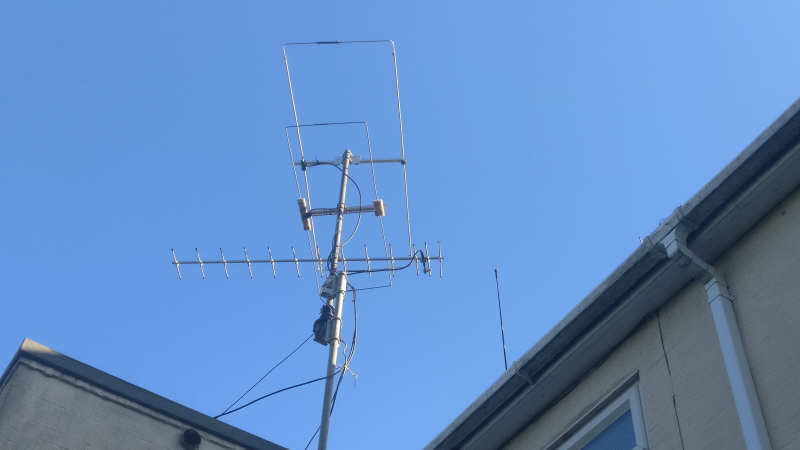 As it is solid rod the ability to cut and add anything to the ends of the elements would not have been easy to achieve, but as it turned out the SWR was practically perfect.
As it is solid rod the ability to cut and add anything to the ends of the elements would not have been easy to achieve, but as it turned out the SWR was practically perfect.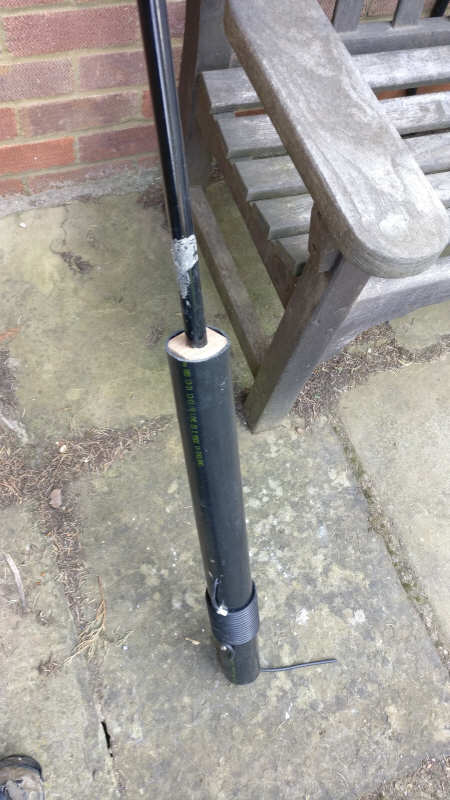 I have been
I have been
